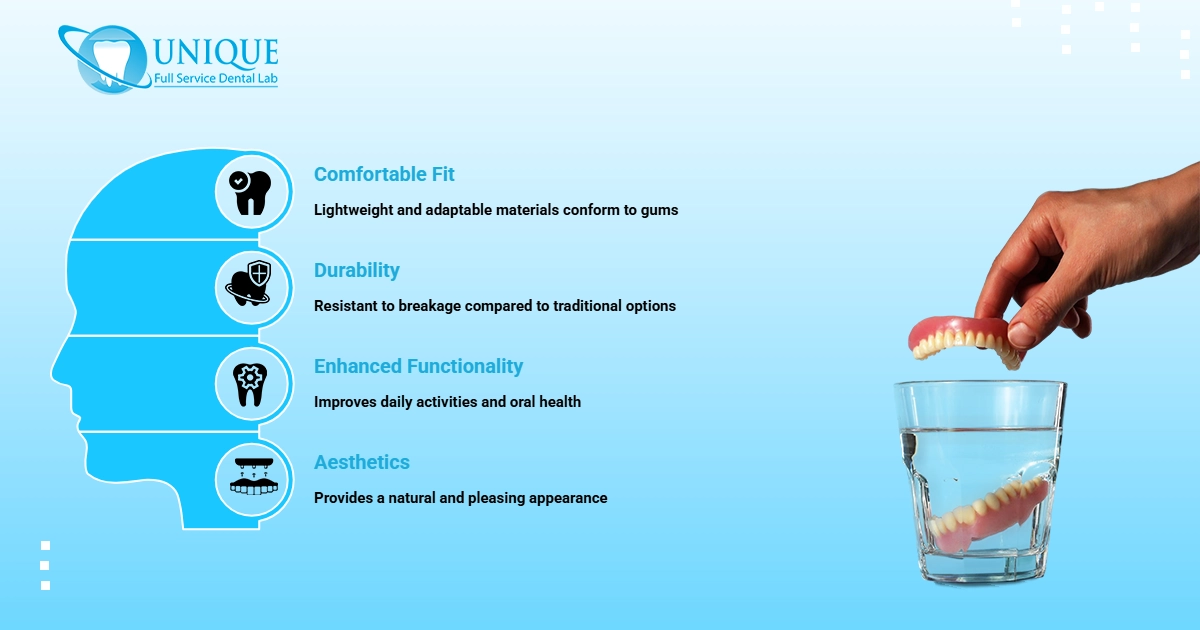Flexible Partial Dentures: Customization for a Beautiful Smile

When it comes to replacing missing teeth, many patients seek options that not only restore function but also enhance aesthetics. Flexible partial dentures have emerged as a popular solution for those wanting a natural-looking, comfortable fit. These innovative appliances are made from soft, pliable materials that adapt to the contours of your mouth, offering a blend of convenience, durability, and style.

How Are Flexible Dentures Beneficial for You?
One of the biggest benefits of flexible partial dentures is their ability to provide a snug, irritation-free fit. Unlike traditional rigid acrylic options, flexible dentures are made from thermoplastic materials that mold comfortably to your gums. This reduces pressure points and minimizes the risk of sore spots.
They’re also an excellent choice for patients with irregular oral structures or those allergic to certain metals. Because of their lightweight and natural appearance, flexible dentures are less noticeable and more comfortable, especially for first-time denture wearers.
For patients seeking the cheapest flexible dentures, there are options that provide both affordability and decent functionality. However, investing in quality materials and proper customization often leads to longer-lasting, more satisfying results.
Types of Flexible Dentures
There are several types of flexible dentures, each designed for specific oral needs:
- Partial Flexible Dentures: Ideal for replacing a few missing teeth. They blend seamlessly with existing teeth and gums.
- Complete Flexible Dentures: A full-arch solution, though less common due to limited structural support compared to rigid full dentures.
- Combination Dentures: Incorporating both flexible and metal components for added strength and stability.
When comparing options, consider your comfort level, budget, and long-term dental goals. For full mouth restoration, some patients may still prefer premium full dentures , which offer added durability and precision.
Potential Disadvantages of Flexible Dentures
Despite their many advantages, it’s important to understand the disadvantages of flexible dentures:
- Limited Repair Options: They are more difficult to adjust or repair than traditional acrylic dentures.
- May Not Be Ideal for Severe Tooth Loss: In cases where more support is needed, flexible materials may lack the strength required.
- Higher Maintenance: Their porous nature can make cleaning slightly more challenging without proper care routines.
The beauty of flexible partial dentures lies in their customization. Your denture will be crafted to match your gum tone, tooth shade, and bite alignment. This results in a more natural smile that enhances both confidence and functionality.
Whether you’re looking for a budget-friendly option or aiming for optimal comfort, flexible partial dentures offer a compelling solution. Pairing flexibility with aesthetics, they continue to be a top choice for patients wanting a beautiful and functional smile.
Understanding the types of flexible dentures and weighing their advantages and drawbacks can help you make the right decision. Consult your dental professional to explore whether flexible partial dentures are the ideal fit for your oral health journey.


Leave a Reply